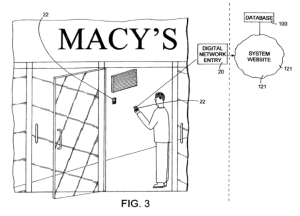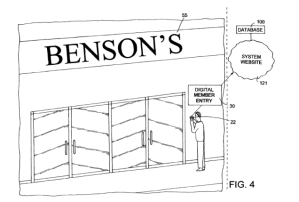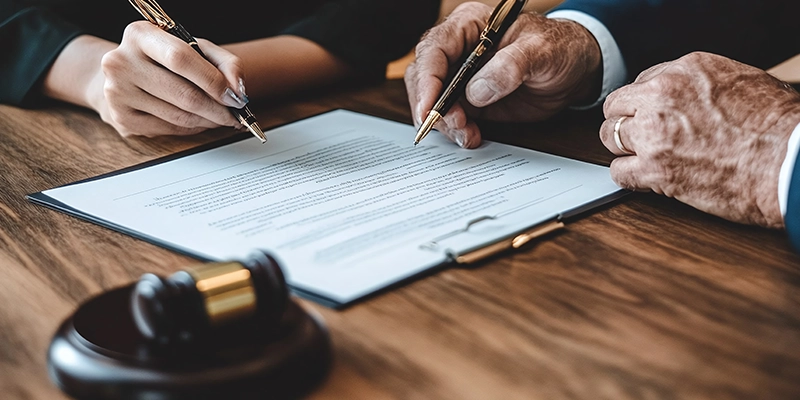
by Dennis Crouch
I’m generally energized to read a selection that splits hairs–finding some claims in a patent legitimate and some others invalid. My hope is that the clarification will genuinely get to the crux of the problems and assistance me to greater comprehend how the legislation performs. I’m often upset, but the Federal Circuit’s most recent decision in Weisner v. Google LLC, — F.4th — (Fed. Cir. 2022) does provide some good clues. The standard final result right here: Weisner’s statements directed toward amassing facts are abstract thoughts all those directed toward applying the data are patent qualified. This end result is consistent with what we are seeing in biotech as effectively: diagnostics get a thumbs down therapeutics get a thumbs up.
Weisner sued Google for patent infringement back in 2020, asserting infringement of a relatives of 4 patents. U.S. Patent Nos. 10,380,202, 10,642,910, 10,394,905 and 10,642,911. But, Google gained the scenario rather swiftly on a R.12(b)(6) movement to dismiss with a holding from the district courtroom that the asserted claims are ineligible beneath 35 U.S.C. § 101 (abstract concepts). On enchantment, a divided Federal Circuit has reversed-in-component, holding that some of the claims are patent suitable for the reason that they employ “a specific remedy to a difficulty rooted in computer technologies.” Alice Step 2.
Judge Stoll wrote the majority impression joined by Decide Reyna. Judge Hughes dissented, arguing that all the promises are invalid.

Weisner’s 4 patents are all part of the similar spouse and children and all relate to means of recording a person’s actual physical place background in techniques that correspond to specified transactions. In the graphic (Fig.3 previously mentioned), you can see the dude interacting with a Macy’s tale product. Dude’s phone is configured to report the transaction along with the area history and thrust it to the cloud. Dude is undertaking one thing related at Benson’s (Fig.4 down below), but in that a single he is getting into the transaction facts manually considering the fact that Benson’s is a Brooklyn establishment and isn’t superior-tech like Macy’s.

The Federal Circuit divided the claims into two categories:
- Declare Established A: Accumulating place histories for afterwards use.
- Assert Established B: Accumulating the place historical past and also working with hose histories to increase lookup benefits (e.g., give diverse research effects if somebody has been to a Brooklyn Benson’s prior to).
In the enchantment, the Federal Circuit agreed that all of the statements fall short Alice step 1. In distinct, the court docket found that they had been all directed to the unpatentable plan of “accumulating data on a user’s movements and spot historical past and electronically recording that data.” Primarily, this is an digital journey log that is correctly the very same as what individuals have been doing for all of heritage. As the district court docket wrote: “Humans have persistently held documents of a person’s place and vacation in the variety of travel logs, diaries, journals, and calendars, which compile data these as time and place.” Weisner v. Google LLC, 551 F. Supp. 3d 334 (S.D.N.Y. 2021). Weisner argued that the claims were being limited to preserving journey background of users only — a feature that increases knowledge integrity. On appeal though, the Federal Circuit rejected this declare as “attorney argument, unlinked to the criticism or the patent promises or technical specs.” Even although eligibility is a concern of law, it should still be based on a thing extra than only lawyer argument.
At action 2, the courtroom also agreed that Declare Established A was not salvageable since the recited innovations are all basically generically claimed components.
But, Declare Established B is diverse. Initially, mainly because Established B provides the research effects works by using, the Federal Circuit uncovered it to be a “much closer question” as to no matter whether they are directed to an abstract thought. In the conclude however the court docket concluded that the statements are directed to an summary idea at Alice Phase 1. I take note in this article that the appellate court docket did not use any genuine analysis to decide this situation other than seemingly legal professional judgely argument. Possibly the courtroom should have checked the prior portion of this extremely belief in which it discounted mere attorney argument on the same topic.
At Alice Phase 2, the court docket concluded that the claims recite a distinct implementation that – at minimum at this stage – must have survived a movement to dismiss due to the fact they “plausibly capture an creative thought. Listed here, the court notes that the ingenious notion arrives from tying lookups to a 3rd celebration “reference individual” whose place heritage is similar to the celebration doing an online search. “The process then prioritizes search success that the reference specific has frequented.” In its final decision, the Federal Circuit described that this linkage is much more than merely “improving website lookup utilizing spot record.” Relatively, it is a distinct implementation of that notion.
Choose Hughes wrote in dissent that the claimed lookup improvements are just like any previous research with the addition of new searchable info — site heritage. The Stoll the vast majority responds in a footnote that Decide Hughes view “misses the point” by discounting the significance of prioritizing travel histories in the look for. As I outlined in the intro, this consequence fits a conventional technique that we are observing in eligibility scenarios — it is a great deal less difficult to shield methods of using details than it is to safeguard procedures of gathering facts. In the use-situation, the facts alone combined with some use will consistently be observed as an inventive concept. On the other hand, the courts have been a lot less prepared to say that gathering facts is patent qualified.
= = = =
The patents listed here are co-owned by the inventors, Sholem Weisner and Schmuel Nemanov. Weisner needed to sue Google, but Nemanov refused. Weisner went forward and sued Google and also joined Namanov as an involuntary bash less than FRCP 19(a). See, AsymmetRx, Inv. v. Biocare Med., 582 F.3d 1314, 1322 (Fed. Cir. 2009)(“A patentee that does not voluntarily sign up for an motion prosecuted by its unique licensee can be joined as a defendant….”). The settlement among the two functions is a little bit interesting. Weisner owns 78% of the rights, and the get-togethers agreed that he would handle exploitation of the patent “and will not be undercut by a minority owner.” WeisnerNemanovAgreement. The two battled these challenges in a parallel lawsuit in NY Point out Court docket. WEISNER, SHOLEM vs. NEMANOV, SHMUEL, Docket No. 502269/2020 (N.Y. Sup Ct. Jan 29, 2020).




